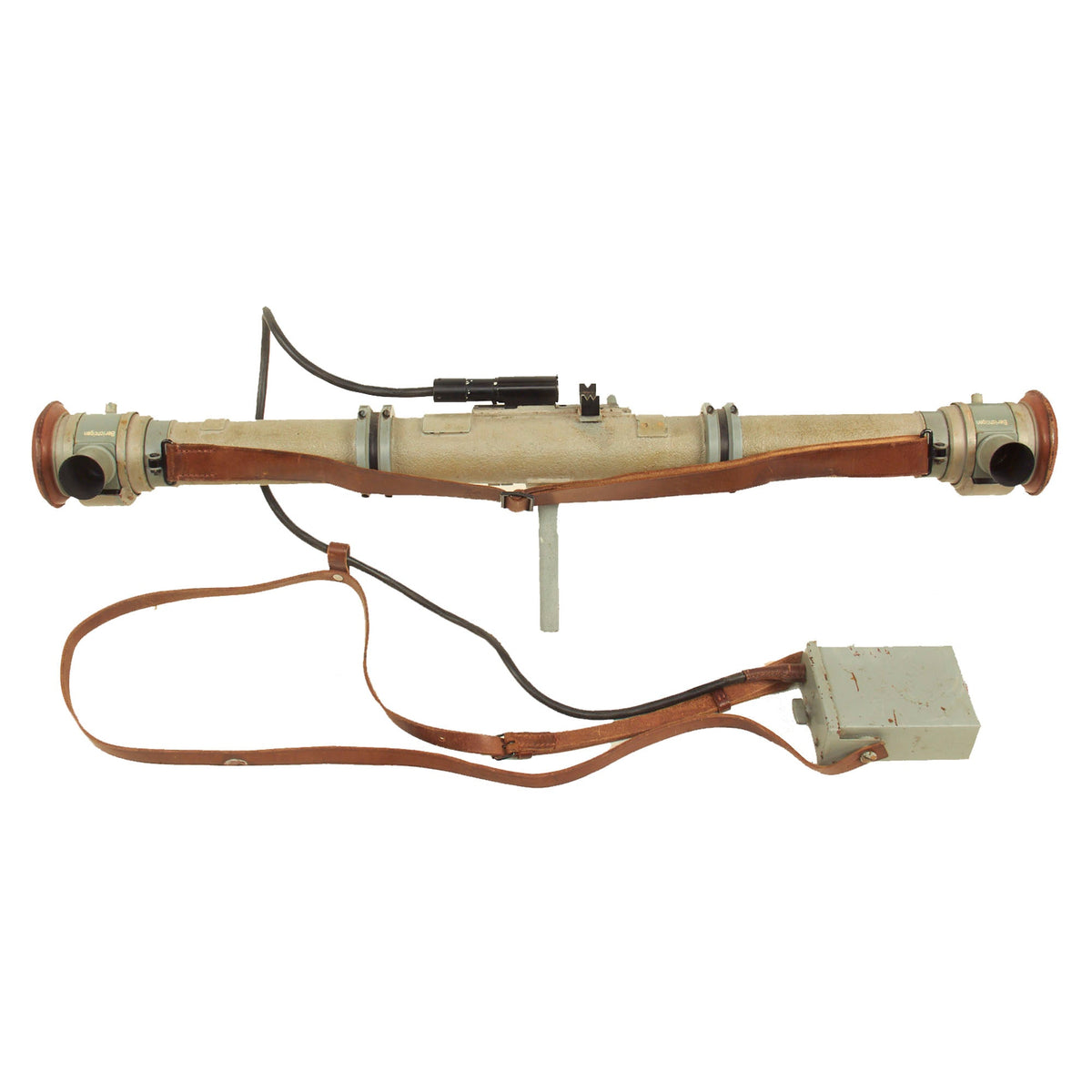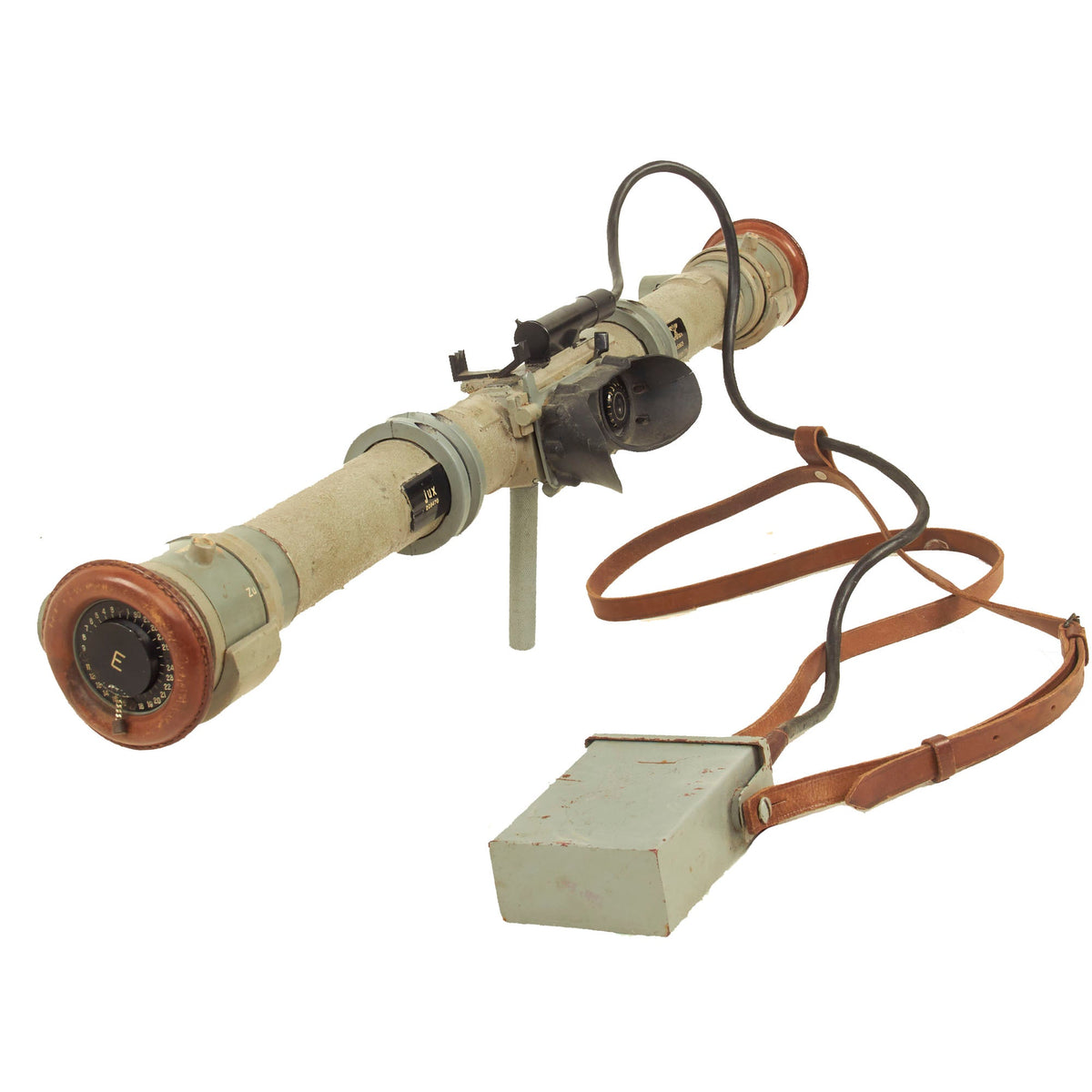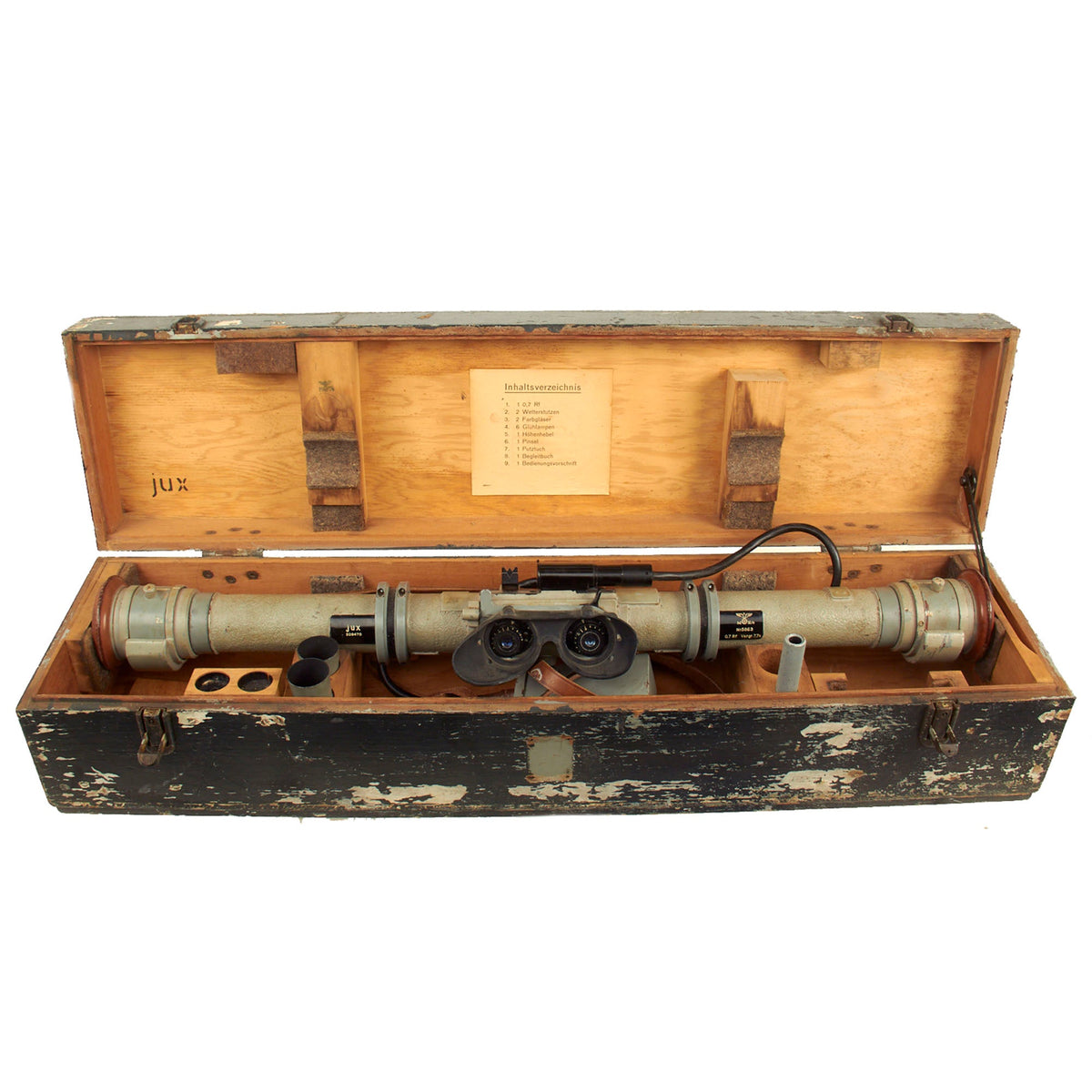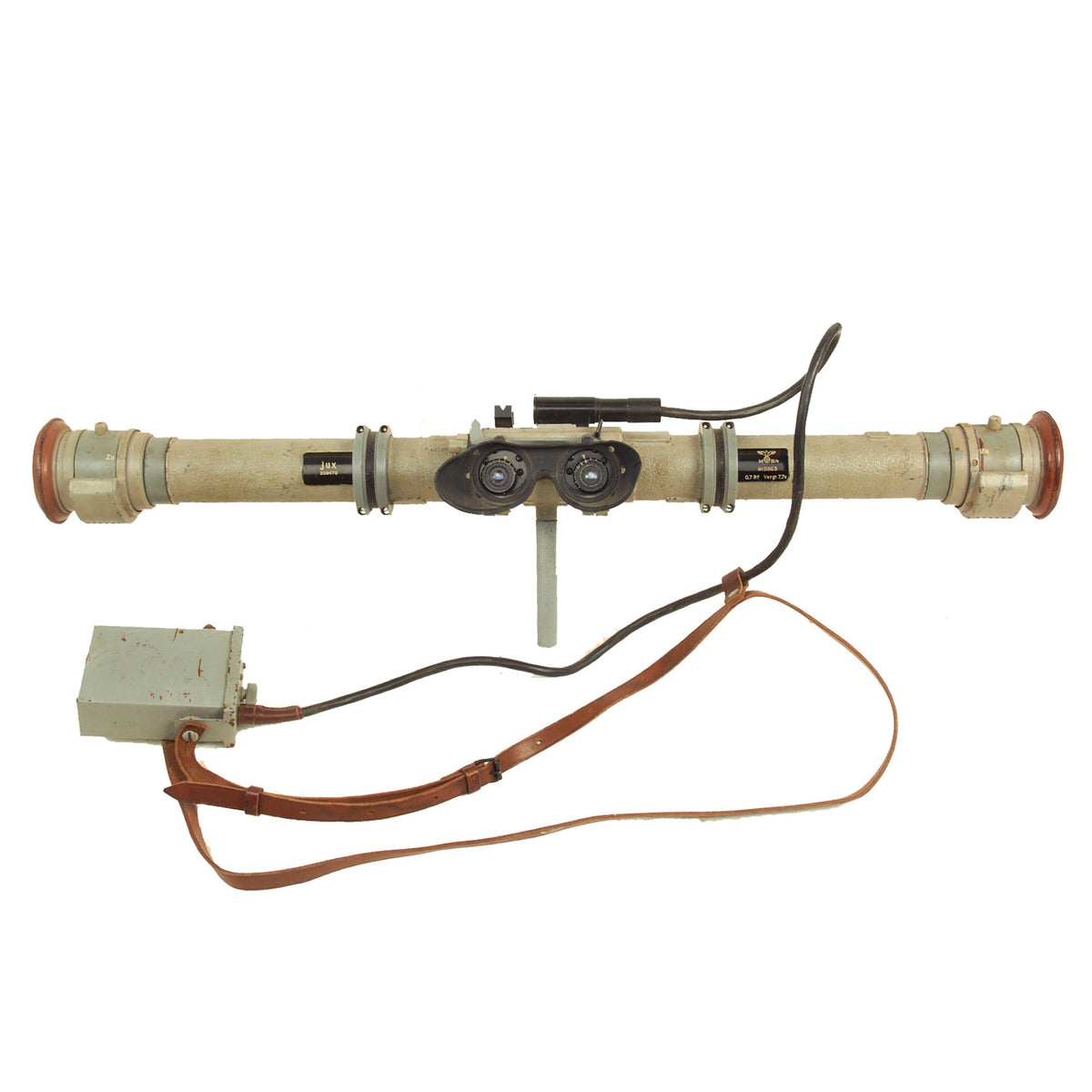Original German WWII Kriegsmarine 7.7× 0.7m Stereoscopic Rangefinder by NEDINSCO in Transit Chest with Accessories Original Items
$ 1.995,00 $ 498,75
Original Item: Only One Available. This is an excellent example of a German WWII Kriegsmarine 0.7m Stereoscopic rangefinder, made in occupied Holland by the NEDINSCO company. It comes complete with most of the original issue accessories in its original transit chest, which measures 34 1/4″ x 8 3/4″ x 7 1/4″. It still retains the original German markings and data plates, with the left one giving the maker information:
jux
209470
This is the German three letter code for the Dutch company NEDINSCO – Nederlandische Instrumenten Companij, located in Venlo. They are a known maker of German WWII optics, and continued to make optics post war.
The other data plate is marked with the correct Kriegsmarine Waffenamt inspection markings and identification:
M (Eagle) IV/a
Nr.5863
0,7 Rf Vergr. 7,7x
There were several main Marinewaffenamt (MWa) or Naval Weapons Offices, and “IV” was the one responsible for Optics. They had several sub offices, so we are not able to identify where exactly IV/a was located, but this is a known marking and totally correct. The plate also indicates that it is a 0.7m (70cm) range finder, with a Vergrößerung (magnification) of 7.7. The chest bears additional markings, which match those of the rangefinder.
The rangefinder is in wonderful condition, with the original paint very well retained, as well as the original pads on the end. It comes with an original manual, eye filters, eye sunshields, and also the light with attached battery pack. There is even the knurled post for holding it by hand, as well as a set of unused bulbs still in the chest.
A wonderful example and comes more than ready for further research and display.
A stereoscopic rangefinder or stereoscopic telemeter is an optical device that measures distance from the observer to a target, using the observer’s capability of binocular vision. It looks similar to a coincidence rangefinder, which uses different principles and has only one eyepiece. German instruments tended to use the stereoscopic principle while British ones used coincidence.
A stereoscopic rangefinder uses two eyepieces and relies on the operator’s visual cortex to merge the two images into a single picture. A reference mark is separately inserted into each eyepiece. The operator first adjusts the direction of the range finder so that the fixed mark is centered on the target, and then the prisms are rotated until the mark appears to overlap in the operator’s combined view. The range to the target is proportional to the degree of rotation of the prisms.
Fast Shipping with Professional Packaging
Thanks to our longstanding association with UPS FedEx DHL, and other major international carriers, we are able to provide a range of shipping options. Our warehouse staff is expertly trained and will wrap your products according to our exact and precise specifications. Prior to shipping, your goods will be thoroughly examined and securely secured. We ship to thousands clients each day across multiple countries. This shows how we're dedicated to be the largest retailer on the internet. Warehouses and distribution centres can be located throughout Europe as well as the USA.
Note: Orders with more than one item will be assigned a processing date depending on the item.
Before shipping before shipping, we'll conduct a thorough inspection of the items you have ordered. Today, the majority of orders will be delivered within 48 hours. The delivery time will be between 3-7 days.
Returns
The stock is dynamic and we cannot completely manage it because multiple stakeholders are involved, including our factory and warehouse. So the actual stock may alter at any time. It's possible that you may not receive your order once the order has been made.
Our policy is valid for a period of 30 days. If you don't receive the product within 30 days, we are not able to issue a refund or an exchange.
You can only return an item if it is unused and in the same state as the day you received it. You must have the item in its original packaging.
Related products
Uncategorized
Uncategorized
Uncategorized
Australian WWII Owen MK1 Machine Carbine SMG Custom Fabricated Replica with Sling Original Items
Uncategorized
Uncategorized
Uncategorized
Uncategorized
Uncategorized
Angolan Rebel 1970s era 60mm Inert Display Mortar from Angolan Civil War Original Items
Uncategorized
Uncategorized
Uncategorized
Armored Burgonet Helmet & Polearm from Scottish Castle Leith Hall Circa 1700 Original Items
Uncategorized
Uncategorized
Armoured Fighting Vehicles of the World: AFVs of World War One (Hardcover Book) New Made Items
Uncategorized
Uncategorized
Uncategorized
Uncategorized
Uncategorized
Uncategorized
Uncategorized












































































